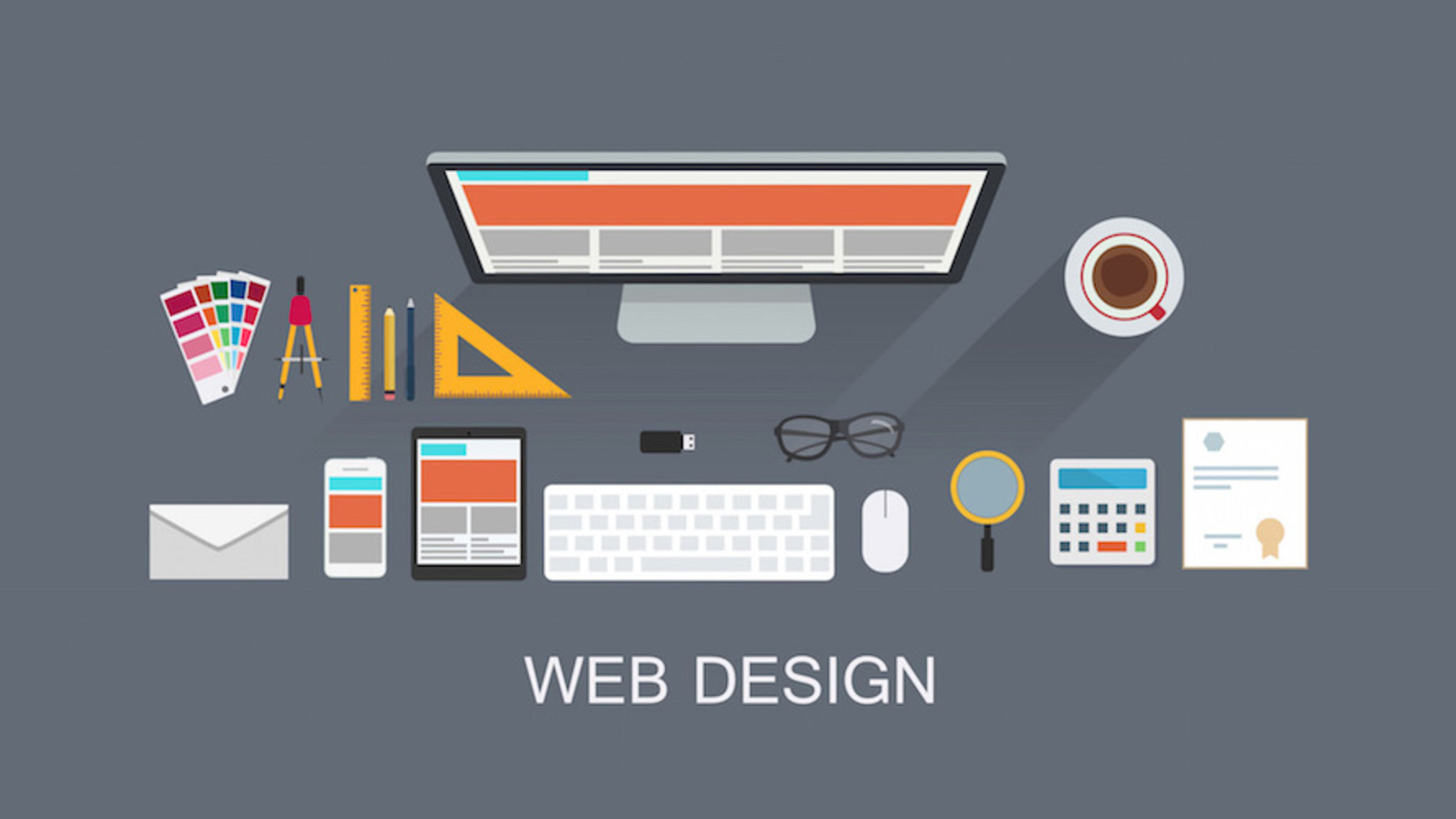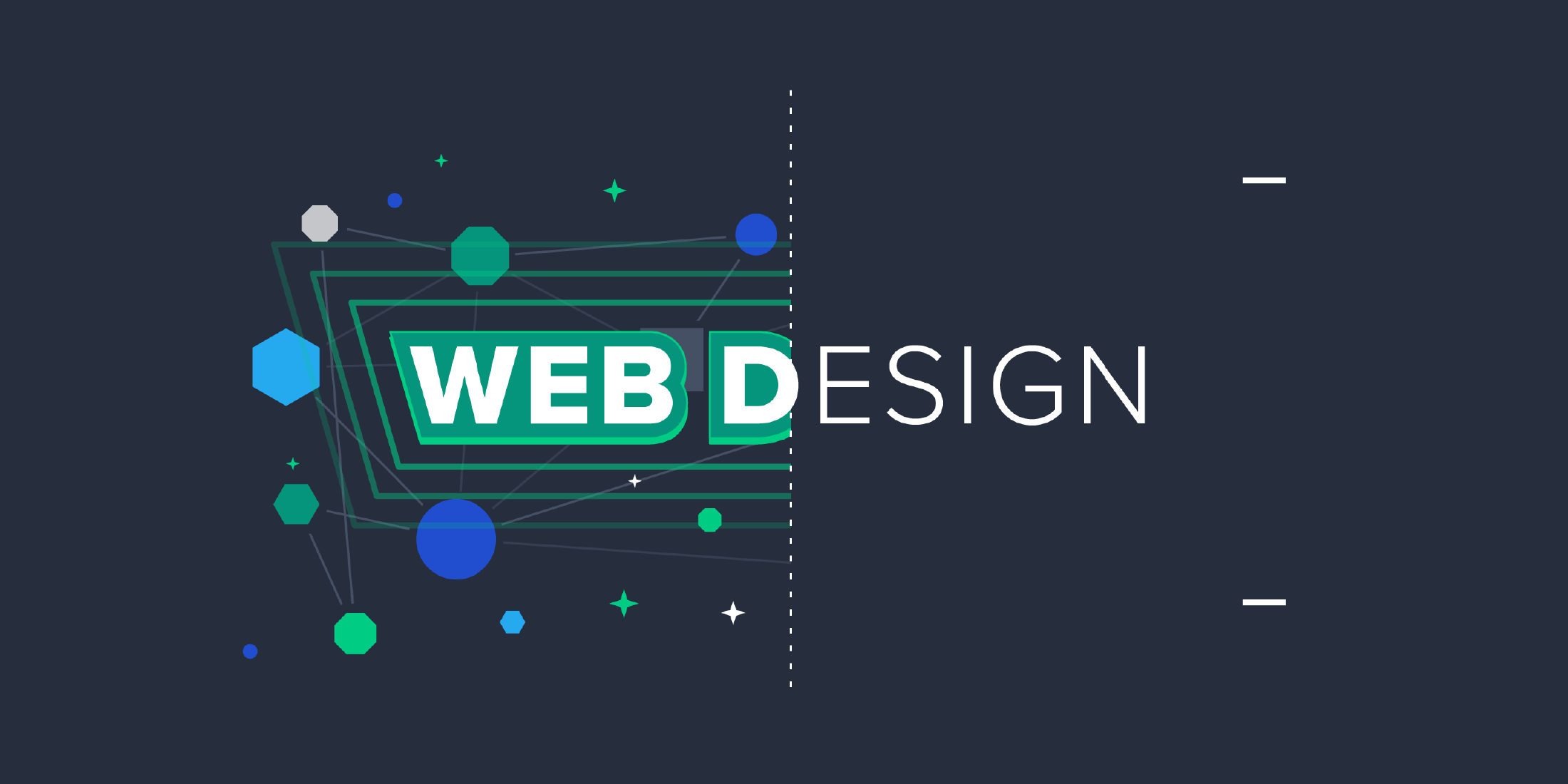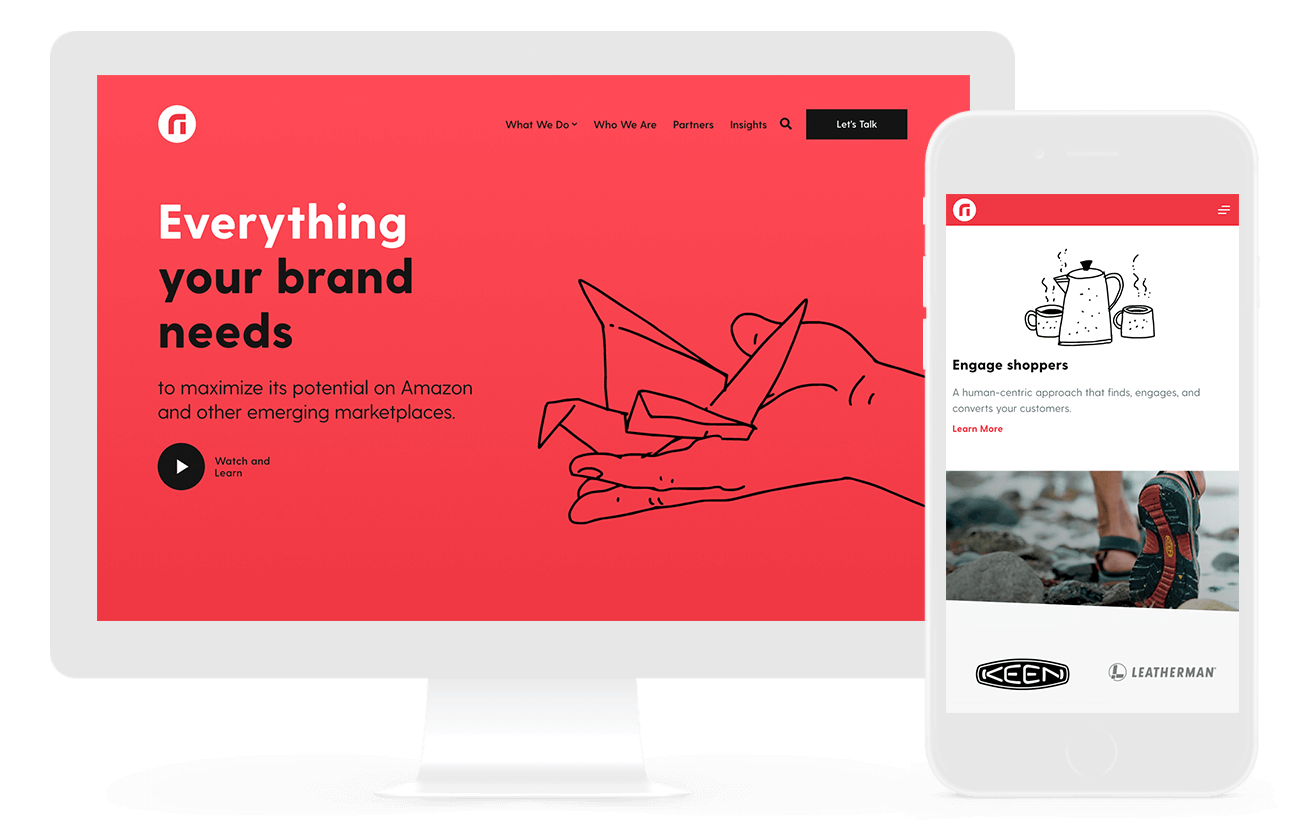All Categories
Featured
Table of Contents
- – St Louis Seo Company - St Louis Web Design And...
- – Penner Home - Durham Web Design - Penner Web ...
- – Web Design Museum 1991 – 2006 Tips and Tricks:
- – Law Firm Website Design, Attorney Web Design,...
- – Web Design And Development - Invision Tips an...
- – Google Web Designer - Home Tips and Tricks:
- – Web Designer: Learn The 9 Skills You Need In...
- – Otc Web Design Girdwood, Alaska - Web Design...
- – Web Designer: Learn The 9 Skills You Need In...
- – Collaborate & Create Amazing Graphic Design ...
- – What Is Web Design? - Interaction Design Fou...
St Louis Seo Company - St Louis Web Design And Internet ... Tips and Tricks:
Quick summary Usability and the utility, not the visual design, identify the success or failure of a website. Because the visitor of the page is the only individual who clicks the mouse and therefore decides whatever, user-centric design has actually developed as a basic technique for successful and profit-oriented website design - web design frederick md.
and the utility, not the visual style, determine the success or failure of a site. Given that the visitor of the page is the only person who clicks the mouse and for that reason chooses whatever, user-centric design has actually ended up being a standard approach for effective and profit-oriented web style. If users can't utilize a function, it might as well not exist.
g. where the search box need to be put) as it has already been done in a variety of articles; instead we concentrate on the techniques which, utilized appropriately, can cause more advanced design decisions and streamline the process of viewing presented details. Please discover that you might be interested in the usability-related short articles we have actually released prior to: Principles Of Excellent Site Style And Reliable Web Design Guidelines, In order to use the principles effectively we initially require to understand how users communicate with websites, how they think and what are the basic patterns of users' behavior.
Penner Home - Durham Web Design - Penner Web Design ... Tips and Tricks:
Visitors glimpse at each brand-new page, scan a few of the text, and click the first link that captures their interest or vaguely looks like the thing they're looking for. There are large parts of the page they don't even look at. A lot of users browse for something interesting (or useful) and clickable; as quickly as some appealing candidates are found, users click.
If a page supplies users with premium material, they are willing to jeopardize the material with advertisements and the style of the website. This is the reason not-that-well-designed sites with premium material get a lot of traffic over years. Content is more crucial than the style which supports it.

Users don't read, they scan. Notice how "hot" areas abrupt in the middle of sentences. This is common for the scanning process. Extremely simple principle: If a site isn't able to fulfill users' expectations, then designer failed to get his job done correctly and the business loses cash. The higher is the cognitive load and the less intuitive is the navigation, the more willing are users to leave the site and look for alternatives.
Web Design Museum 1991 – 2006 Tips and Tricks:
Neither do they scan webpage in a direct style, going sequentially from one site area to another one. Instead users satisfice; they select the very first reasonable option. As soon as they find a link that seems like it may cause the goal, there is an excellent possibility that it will be immediately clicked.
It does not matter to us if we comprehend how things work, as long as we can use them. If your audience is going to imitate you're creating billboard, then style excellent signboards." Users desire to have the ability to control their browser and rely on the constant data presentation throughout the website.
If the navigation and site architecture aren't intuitive, the number of concern marks grows and makes it harder for users to comprehend how the system works and how to obtain from point A to point B. A clear structure, moderate visual ideas and quickly identifiable links can help users to find their course to their aim.
Law Firm Website Design, Attorney Web Design, Lawyer ... Tips and Tricks:

Since users tend to explore websites according to the "F"-pattern, these 3 statements would be the very first components users will see on the page once it is packed. The style itself is easy and instinctive, to comprehend what the page is about the user requires to search for the answer.
Once you have actually achieved this, you can interact why the system is useful and how users can benefit from it. Don't Squander Users' Persistence, In every task when you are going to offer your visitors some service or tool, attempt to keep your user requirements very little.
Novice visitors are willing to, not filling long web types for an account they might never ever utilize in the future. Let users check out the website and find your services without forcing them into sharing personal information. It's not sensible to force users to go into an e-mail address to evaluate the function.
Web Design And Development - Invision Tips and Tricks:
Stikkit is a best example for an user-friendly service which needs nearly nothing from the visitor which is inconspicuous and soothing. And that's what you want your users to feel on your website. Obviously, Mite requires more. The registration can be done in less than 30 seconds as the type has horizontal orientation, the user doesn't even require to scroll the page.
A user registration alone is sufficient of an impediment to user navigation to cut down on inbound traffic. 3. Handle To Focus Users' Attention, As websites provide both static and dynamic material, some aspects of the user interface draw in attention more than others do. Certainly, images are more distinctive than the text just as the sentences marked as bold are more appealing than plain text.
Focusing users' attention to specific areas of the website with a moderate usage of visual elements can assist your visitors to receive from point A to point B without thinking about how it in fact is supposed to be done. The less concern marks visitors have, the they have and the more trust they can establish towards the business the website represents.
Google Web Designer - Home Tips and Tricks:
4. Aim For Function Direct exposure, Modern website design are usually slammed due to their approach of guiding users with aesthetically appealing 1-2-3-done-steps, big buttons with visual effects etc. However from the style point of view these components actually aren't a bad thing. On the contrary, such as they lead the visitors through the site content in an extremely simple and easy to use way.
The site has 9 main navigation alternatives which are noticeable at the first look. What matters is that the content is well-understood and visitors feel comfortable with the method they engage with the system.
com gets straight to the point. No charming words, no exaggerated statements. Instead a rate: simply what visitors are searching for. An optimum option for reliable writing is touse brief and succinct phrases (come to the point as rapidly as possible), use scannable design (classify the content, use multiple heading levels, use visual elements and bulleted lists which break the flow of consistent text blocks), use plain and objective language (a promotion does not require to sound like ad; provide your users some reasonable and unbiased reason they should use your service or stay on your website)6.
Web Designer: Learn The 9 Skills You Need In 2022 - Skillcrush Tips and Tricks:
Users are seldom on a website to take pleasure in the design; moreover, in many cases they are trying to find the information in spite of the style - web design frederick md. Pursue simpleness instead of complexity. From the visitors' perspective, the best website design is a pure text, with no ads or additional material blocks matching precisely the question visitors utilized or the content they have actually been looking for.
Finch clearly provides the information about the site and offers visitors an option of alternatives without overcrowding them with unneeded material. 7. Do not Be Afraid Of The White Space, In fact it's actually hard to overstate the value of white space. Not just does it help to for the visitors, however it makes it possible to perceive the information presented on the screen.
Complex structures are more difficult to check out, scan, evaluate and deal with. If you have the choice in between separating 2 design segments by a visible line or by some whitespace, it's typically much better to utilize the whitespace service. (Simon's Law): the much better you handle to supply users with a sense of visual hierarchy, the much easier your content will be to perceive.
Otc Web Design Girdwood, Alaska - Web Design & Google ... Tips and Tricks:
The exact same conventions and guidelines ought to be used to all elements.: do the most with the least quantity of cues and visual elements. Clarity: all parts must be designed so their meaning is not ambiguous.
Conventions Are Our Pals, Conventional design of site elements does not result in a boring website. In fact, as they minimize the finding out curve, the requirement to determine how things work. For circumstances, it would be an use nightmare if all websites had various visual presentation of RSS-feeds. That's not that different from our regular life where we tend to get utilized to standard concepts of how we organize data (folders) or do shopping (positioning of products).
comprehend what they're expecting from a website navigation, text structure, search placement etc. A case in point from usability sessions is to translate the page in Japanese (presuming your web users do not know Japanese, e. g. with Babelfish) and provide your use testers with a task to discover something in the page of different language.
Web Designer: Learn The 9 Skills You Need In 2022 - Skillcrush Tips and Tricks:
Steve Krug recommends that it's better to, but take advantages of conventions when you do not. 10. Test Early, Test Frequently, This so-called TETO-principle ought to be applied to every website design project as use tests often offer into substantial issues and problems connected to a given layout. Test not too late, not insufficient and not for the wrong reasons.
Some crucial points to remember: according to Steve Krug, and screening one user early in the project is much better than screening 50 near the end. Accoring to Boehm's very first law, errors are most frequent throughout requirements and design activities and are the more expensive the later they are removed.
That indicates that you design something, test it, fix it and after that test it once again. There may be issues which have not been found during the preliminary as users were almost obstructed by other problems. usability tests. Either you'll be pointed to the issues you have or you'll be pointed to the lack of major style flaws which remains in both cases a helpful insight for your job.
Collaborate & Create Amazing Graphic Design For Free Tips and Tricks:

This holds for designers. After you have actually worked on a website for couple of weeks, you can't observe it from a fresh viewpoint anymore. You know how it is built and for that reason you know precisely how it works you have the knowledge independent testers and visitors of your website wouldn't have.
It can be linked to other areas such as graphic design, user experience, and multimedia arts, but is more aptly seen from a technological standpoint. It has actually ended up being a big part of people's everyday lives. It is tough to picture the Web without animated graphics, various designs of typography, background, videos and music.

During 1991 to 1993 the World Wide Web was born. Text-only pages could be viewed using a simple line-mode browser. There had actually been no integrated approach to graphic design aspects such as images or sounds.
What Is Web Design? - Interaction Design Foundation (Ixdf) Tips and Tricks:
The W3C was created in October 1994 to "lead the World Wide Web to its complete capacity by establishing typical protocols that promote its advancement and guarantee its interoperability." This prevented any one company from monopolizing a propriety web browser and shows language, which might have modified the impact of the World Wide Web as a whole.
As this has taken place the innovation of the web has likewise moved on. There have also been significant changes in the way people utilize and access the web, and this has changed how websites are designed.
Learn more about Lovell Media Group LLC or TrainACETable of Contents
- – St Louis Seo Company - St Louis Web Design And...
- – Penner Home - Durham Web Design - Penner Web ...
- – Web Design Museum 1991 – 2006 Tips and Tricks:
- – Law Firm Website Design, Attorney Web Design,...
- – Web Design And Development - Invision Tips an...
- – Google Web Designer - Home Tips and Tricks:
- – Web Designer: Learn The 9 Skills You Need In...
- – Otc Web Design Girdwood, Alaska - Web Design...
- – Web Designer: Learn The 9 Skills You Need In...
- – Collaborate & Create Amazing Graphic Design ...
- – What Is Web Design? - Interaction Design Fou...
Latest Posts
The Leader In Website Design – Squarespace Tips and Tricks:
Minneapolis Web Design - 100+ Five Star Reviews - Seo ... Tips and Tricks:
Learning Web Design: A Beginner's Guide To Html, Css ... Tips and Tricks:
More
Latest Posts
The Leader In Website Design – Squarespace Tips and Tricks:
Minneapolis Web Design - 100+ Five Star Reviews - Seo ... Tips and Tricks:
Learning Web Design: A Beginner's Guide To Html, Css ... Tips and Tricks: